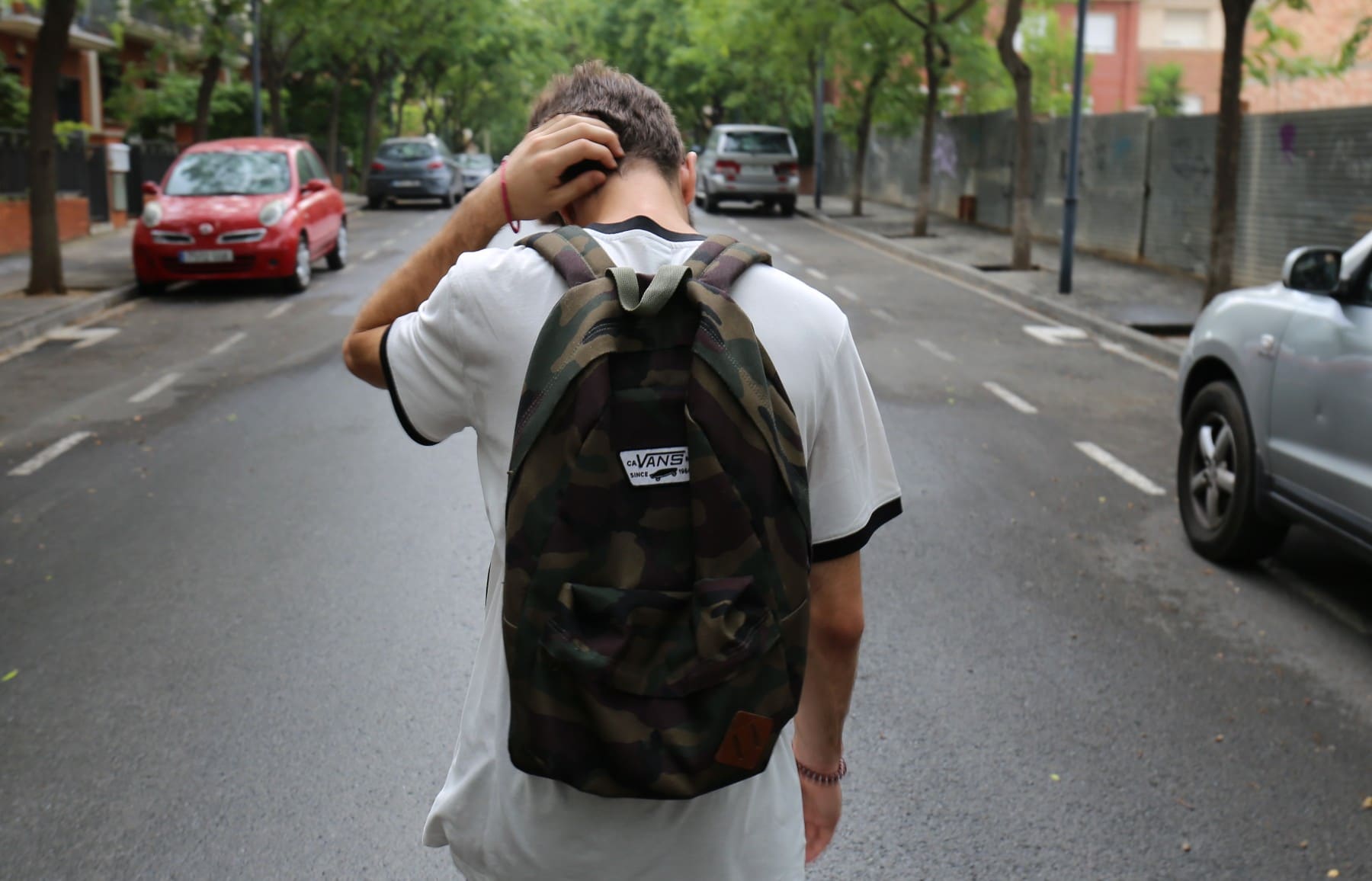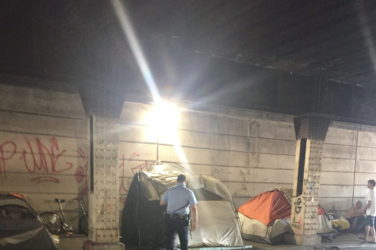One of the last memories I have of hanging out with my friend Jana (not her real name) was Halloween. We were in seventh grade, arguably too old to be trick-or-treating. I was wearing raver pants and a baggy vintage Nirvana shirt that I’d scored for a couple bucks at Value Village—one of the perks of growing up in Seattle. I don’t remember what she wore exactly, but she was equally non-costumed.
We went around houses in her quiet, wealthy neighborhood claiming to be dressed as Kurt Cobain, teenagers, or creatures we clearly were not. It was ridiculous, and ridiculously fun. I can’t remember if I was high. Jana wasn’t, because she didn’t do drugs. But it’s possible I was stoned on weed or half a bottle of Robitussin, because I did.
Sometime not long after that, Jana told me she couldn’t be friends with me anymore, because her parents said she wasn’t allowed to be around people who did drugs.
In comparison to other traumas I’ve experienced, losing Jana’s friendship was small. By no means do I blame her, or her parents, for the downward trajectory of my life after that—but that also doesn’t mean it was an insignificant event.
Being told that my best friend was no longer able to spend time with me because of my drug use—use which she did not engage in with me, and which was the manifestation of my own, already-existent trauma and depression—made me feel like I was one of the so-called “bad kids.” And it happened at a time when I was using drugs heavily enough for it to be problematic, but had not yet developed any kind of dependency—nor moved on to some of the substances I would eventually develop a serious addiction to, like methamphetamine and heroin.
Jana and I were on opposite ends of the same messaging: That young people who use drugs are dangerous, bad and should be kept at arm’s-length.
Having and keeping healthy relationships at that crucial time might not have changed anything. Maybe my mental health issues were already severe enough that feeling valued by my peers, and being around others who were modeling healthy behavior, would not have been enough. I don’t know because that didn’t happen.
I do know that feelings of exclusion and unworthiness haunted me during my youth and continue to spring up even now, at age 32. And I definitely know that drug use and drug culture served as a balm for those feelings for a very long time.
Jana and I were on opposite ends of the same messaging: That young people who use drugs are dangerous, bad and should be kept at arm’s-length. Unfortunately, that messaging hasn’t gone away. It has not gone away in the sense that young people are still being given that advice—nor in the sense that adults are also being given the same general messaging, if packaged slightly differently. For young people, the need to keep a “safe distance” from drug users tends to be about the safety of the non-drug user. For adults, remaining friendly or supportive with a drug user gets called “enabling,” and framed as harmful.
“For young people especially, but for people of all ages, peer connection is a huge vector, and so one of the things that happens to young people in all stages of progression of [substance use] disorder … are successive waves of more and more deviant and problematic behaviors,” Marc Fishman, an addiction medicine physician who also teaches at John Hopkins University, told Filter. He added that, “each milestone and each stage of progression of severity is promoted by deviant peers.”
It’s true that young people are particularly prone to peer influence; mirroring behavior is built into our DNA. But the use of stigmatizing language like “deviant peers” highlights the exact problem with school-age anti-drug messaging, and how our society values the lives of some kids over others. As a former “deviant peer,” having such a label attributed to me damaged me emotionally and socially. I became isolated from anyone who didn’t also use drugs. While I valued those drug-using friends, and still have healthy relationships with some of them, I believe I could have benefited from a wider social circle.
“I didn’t know you did stuff like this. Everyone said you were just out selling crack.”
I certainly did not only identify as a “deviant.” I also saw myself as a writer, an artist, an intellectual, a music-lover, an actor, a vegan, a teenager, and so much more. But socially and by reputation, I was a druggie.
I remember, years after losing Jana, running into someone who’d gone to the same middle school. We hung out for a few hours, and at one point he exclaimed something to the effect of, “I didn’t know you did stuff like this. Everyone said you were just out selling crack.” I have never sold crack, by the way.
Peer influence can certainly be a contributing factor to substance use among young people. I was subjected to it by my friends, and I’m sure I subjected others to it as well. But does that make us “deviant” or unworthy of the basic human connection that tethers us all to a sense of normalcy, worth and belonging?
When I asked Fishman whether he thought it was problematic to deprive kids who use drugs chaotically of friendship, he answered that “those people have plenty of friends. Don’t get me wrong; the culture of drug use and deviant culture has plenty of participants.”
A 2018 study, however, found that addictive behaviors among young people were associated with lower peer-group identification and higher psychological distress—suggesting that, contrary to popular messaging, young people who use drugs problematically could benefit greatly from strong social connections.
“We’re social beings and addiction … disconnects people from their communities, from other people. I think that when I think about addiction, I think about this shift from primary relationships being with other people to primary relationships being with a substance,” said Thomas Bannard, who runs Rams in Recovery, the collegiate addiction recovery program at Virginia Commonwealth University.
“For people that get well and heal they need to form new connections with other people, and so it’s really important for people to have a community to connect to,” he added.
It’s a concept that matches addiction author Johann Hari’s famous line: “The opposite of addiction is not sobriety. The opposite of addiction is connection.”
“Minimizing trauma would do way more than postponing first use.”
“For every one year you don’t start [using drugs], the burden, so to speak, of addiction in that age cohort decreases, so there is some relationship between age of first use and development of a use disorder, and that’s the argument behind ages for purchasing alcohol and tobacco or cannabis,” said Mishka Terplan, an OB-GYN and addiction medicine physician in Washington, DC. “But that’s a real sort of simplistic understanding obviously, and if you really want to prevent … addiction I think there might be other things to do, like support people in general, [or] … ensuring that children grow up in safe, stable households devoid of violence. Minimizing trauma would do way more than postponing first use.”
Unsurprisingly, I am not the only person who used drugs at a young age and feels that urging young people to avoid their drug-using peers is a bad idea.
Renae, who asked that only her first name be used, also began using drugs in her teens in the Pacific Northwest. Like me, that use eventually developed into an addiction to heroin. She is now in long-term remission, but recounts that “when I was super into heroin, the accepted advice was … to cut people out of your life if they’re doing drugs, using the removal of a positive relationship as a punitive measure.”
“Fortunately I had people who didn’t do this to me,” she continued, “but I had people who did and it was terrible. I needed regular people in my life … or drugs and drug people become your whole existence, so what the fuck do you have when that is taken away?”
Isolating drug users is not only dangerous in a social context. It also increases the likelihood of fatal overdose—particularly now, when the illicit drug market is in dramatic flux and inundated with fentanyl, even in products not marketed as opioids.
“The pandemic is isolating. How do you make new friends?” asked Nicole Reynolds, a freelance street-based harm reductionist in North Carolina and a member of the Urban Survivors Union. Fear of contracting the virus, coupled with destabilized drug supplies and decreased or wholly shut-down harm reduction and treatment services have thrown many vulnerable drug users into chaotic situations. These include increased physical isolation for people who were already socially isolated by stigma.
“Being alone taking opiates is already dangerous,” said Reynolds. “Not a lot of people I know use the don’t use alone number.”
Although some of Fishman’s language and messaging felt derogatory to me, particularly as someone who experienced the very social rejection he seemed to be prescribing, when I pressed him a little more about what young people could do besides abandoning their friends who used drugs, he suggested, “Talk to your friends, look out for your friends, steer your friends right. If you see your friend doing risky things, say something—don’t be afraid of being called a nerd.”
And that I can agree with. Showing people around you that you care, and helping people in non-judgemental, non-punitive ways to communicate their concerns is far healthier than to label them as “deviant” and worthy of abandonment. I know I could have benefited from a lot more of that in my life.
Photo by Jesús Rodríguez on Unsplash





Show Comments